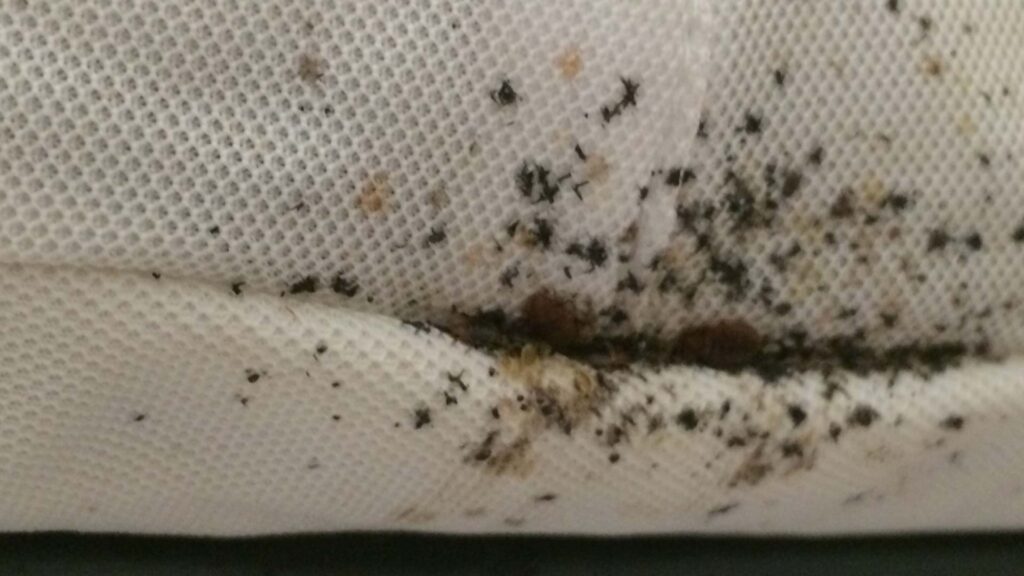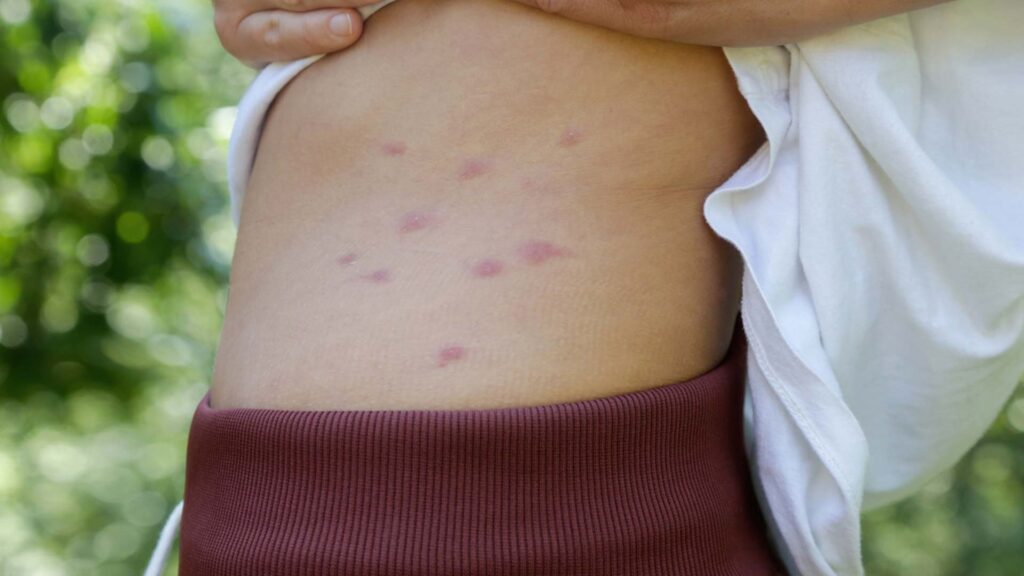How Much Does Bed Bug Treatment Cost
The cost of bed bug treatment varies widely, typically ranging from $300 to $5,000, with an average expense around $1,500. This variation depends on factors such as the severity of the infestation, the size of the area needing treatment, and the method of eradication chosen. Professional extermination, combining chemical and heat treatments, is often the most effective but also the most costly option. Homeowners should consider the extent of the infestation and the potential for recurring costs when evaluating treatment methods.

- Decoding the Cost Factors of Bed Bug Treatment
- Navigating the Financial Burden of Bed Bug Treatment
- Approximate Price Ranges for Various Bed Bug Remediation Services
- The Rising Tide of Infestations: A Closer Look
- Case Study: A Suburban Nightmare
- A Comprehensive Approach to Bed Bug Management
- Frequently Asked Questions About The Cost of Bed Bug Treatment
In the sanctity of our homes, where comfort and safety should be paramount, an insidious challenge often lurks unseen. Bed bugs, the tiny, nocturnal parasites, have emerged as a silent epidemic in residential spaces, turning our bedrooms into battlegrounds. These pests, once thought to be relics of the past, have resurged with a vengeance in modern times, infesting everything from luxury apartments to suburban homes. This resurgence has not only raised significant health concerns but has also brought to light the substantial financial burden associated with their eradication.
The issue of bed bugs transcends mere inconvenience; it strikes at the core of our domestic wellbeing. These pests are adept at hiding in the smallest of crevices, emerging under the cover of night to feed on human hosts. Their bites, often mistaken for other insect bites, can lead to a range of allergic reactions, including itchy welts and, in severe cases, systemic reactions. Beyond the physical symptoms, the psychological impact of a bed bug infestation is profound. The knowledge of sharing one’s living space with these pests can lead to anxiety, sleeplessness, and a pervasive sense of unease, turning the home, a place of refuge, into a source of constant stress.
The financial implications of bed bug infestations are equally alarming. Many homeowners find themselves unprepared for the costs associated with professional extermination services, which are often necessary to fully eradicate these persistent pests. The expense is not just in the eradication but also in the aftermath, which may include replacing infested furniture and textiles, adding to the economic strain.
This article delves into the multifaceted issue of bed bug infestations, exploring the factors that contribute to the cost of treatment, the psychological and physical impacts on homeowners, and the broader implications for public health and safety. Drawing on expert insights, case studies, and recent research, we aim to provide a comprehensive overview of this growing concern, offering practical advice and solutions for those grappling with this uninvited challenge in their homes.
Decoding the Cost Factors of Bed Bug Treatment
Cost Breakdown of Bed Bug Treatment
DIY Treatment
- Cost: $200 – $600
- Includes: Over-the-counter sprays, powders, bed bug traps.
- Risk: Often ineffective, leading to recurring infestations.
Professional Chemical Treatment
- Cost: $300 – $1,500
- Duration: May require multiple visits.
- Effectiveness: High, but may not eliminate eggs.
Professional Heat Treatment
- Cost: $1,000 – $2,500
- Duration: Usually one visit.
- Effectiveness: High, kills bugs at all life stages.
Additional Costs
- Replacing infested furniture and bedding.
- Temporary accommodation if required during treatment.
When it comes to bed bug eradication, understanding the cost factors involved is crucial for homeowners. These costs can vary significantly based on several key elements:
Severity of the Infestation: The extent of the bed bug presence plays a pivotal role in determining the cost. A minor infestation, often confined to one room, will cost considerably less to treat than a widespread problem throughout a home. In severe cases, multiple treatments may be necessary, escalating the overall expense.
Size of the Property: The size of the infested area directly impacts the cost. Larger homes or properties with multiple bedrooms require more time, labor, and materials to treat, leading to higher costs. Apartments or smaller homes, on the other hand, might incur lower expenses due to their compact size.
Treatment Method: The chosen method of extermination significantly influences the cost. Chemical treatments, often the most common approach, vary in price depending on the chemicals used and the number of applications required. Heat treatment, another effective method, involves heating the infested area to temperatures lethal to bed bugs. While highly effective, heat treatments are typically more expensive than chemical alternatives.
Geographical Location: Costs can also vary by region. Urban areas, where infestations are more common, might have more competitive pricing due to the higher availability of pest control services. Conversely, in rural areas or regions with fewer service providers, prices may be higher.
Professional vs. DIY Approaches: Hiring a professional pest control service is generally more costly upfront compared to DIY methods. However, professionals offer expertise and more effective treatments that can save money in the long run by avoiding repeated infestations. DIY treatments, while initially cheaper, may not fully eradicate the problem, leading to recurring costs and potential property damage.
Additional Costs: Homeowners should also consider ancillary costs associated with bed bug treatment. These can include replacing infested furniture or belongings, temporary lodging if the home needs to be vacated during treatment, and preventive measures to avoid future infestations.
Follow-up and Preventive Measures: Post-treatment follow-ups to ensure the complete eradication of bed bugs can add to the cost. Additionally, investing in preventive measures, such as mattress encasements or regular inspections, can be an ongoing cost but crucial for preventing future infestations.
The cost of bed bug treatment is influenced by a multitude of factors, including the severity of the infestation, the size of the property, the method of treatment, geographical location, the choice between professional services and DIY methods, and additional ancillary costs. Homeowners must weigh these factors carefully to understand the potential financial implications and to make informed decisions about managing bed bug infestations.
| Factor | Description | Impact on Cost |
|---|---|---|
| Severity of Infestation | Refers to how widespread the bed bug presence is. | More severe infestations require extensive treatment, increasing costs. |
| Size of Property | The area that needs to be treated (e.g., number of rooms). | Larger properties require more resources and time, leading to higher costs. |
| Treatment Method | Type of treatment used (chemical, heat, etc.). | Heat treatments are generally more expensive but effective; chemical treatments vary in price. |
| Geographical Location | The location of the property. | Urban areas might offer competitive pricing; rural areas may incur higher costs due to limited services. |
| Professional vs. DIY | Choosing between professional services or self-treatment. | Professional services are more costly upfront but more effective; DIY can be cheaper but less reliable. |
| Additional Costs | Costs for replacing items, temporary lodging, etc. | These ancillary costs can add significantly to the overall expense. |
| Follow-up and Prevention | Post-treatment inspections and preventive measures. | Regular follow-ups and preventive steps can add to the cost but are crucial for long-term control. |
Navigating the Financial Burden of Bed Bug Treatment
The financial impact of bed bug treatment can be substantial, often catching homeowners off guard. However, there are several strategies and resources available to help manage these unexpected expenses.
One of the first steps for homeowners is to review their homeowner’s insurance policy. While most standard policies do not cover pest infestations, there are exceptions and additional coverages that might apply. Some insurance companies offer specific endorsements for pest damage, which can significantly reduce out-of-pocket expenses. It’s essential to speak directly with insurance agents to understand the extent of coverage and any applicable conditions.
In many regions, local government bodies and community organizations offer resources and assistance for pest control, including bed bugs. This assistance can come in various forms, such as subsidies, low-cost treatment services, or even free inspections. Homeowners are encouraged to contact their local health departments or community housing agencies to inquire about available programs, especially in areas where bed bug infestations are prevalent.
Many pest control companies understand the financial strain that bed bug eradication can impose. As a result, they often offer payment plans or financing options to make the cost more manageable. These plans can spread the expense over several months, easing the immediate financial burden. It’s important to discuss these options upfront with the service provider and to carefully review any associated terms and interest rates.
While do-it-yourself (DIY) methods may seem like a cost-effective solution, they often prove to be less efficient and more costly in the long run. Ineffective treatment can lead to recurring infestations, increasing the overall expense. However, homeowners can undertake certain preventive measures, such as regular cleaning and monitoring, to complement professional treatment and reduce the likelihood of future infestations.
In multi-unit dwellings, such as apartment complexes, the cost and responsibility of bed bug treatment can be a point of contention. Engaging in open communication with landlords and neighbors is crucial. Collective efforts, such as coordinated treatments and shared preventive measures, can be more effective and cost-efficient than individual approaches.
Investing in protective measures, such as mattress encasements and regular professional inspections, can be a wise long-term strategy. These proactive steps can prevent infestations or detect them early, significantly reducing the need for extensive and expensive treatments.
Navigating the financial aspect of bed bug treatment requires a balanced approach of exploring insurance options, seeking community assistance, considering financing plans, and investing in prevention. By understanding and utilizing these resources, homeowners can effectively manage the financial burden of bed bug eradication while ensuring the safety and comfort of their homes.
Approximate Price Ranges for Various Bed Bug Remediation Services
When tackling bed bug infestations, homeowners and renters face a variety of treatment options, each with its own cost implications. Understanding these can help in making informed decisions about the most effective and economical approach to pest eradication. Here are some common remediation services and their approximate price ranges:
Chemical Treatments
- Standard Chemical Treatment: This is the most common method, involving the use of pesticides to eliminate bed bugs. Prices typically range from $300 to $900 for a standard-sized room or apartment. The cost can increase for larger homes or severe infestations.
- Comprehensive Chemical Treatment: For more extensive infestations, a comprehensive approach may be required, involving multiple visits and treatments. This can cost between $1,200 to $2,500, depending on the size of the property and the severity of the infestation.
Heat Treatment
- Single Room Heat Treatment: This method involves heating a room to a temperature lethal to bed bugs. For a single room, the cost can range from $800 to $1,500.
- Whole-House Heat Treatment: Treating an entire house with heat is more effective but also more expensive, with prices typically ranging from $2,000 to $4,000. The cost can be higher for larger homes.
Freezing Treatment
- Cryonite Freezing: This less common method uses extreme cold to kill bed bugs. It is often used for sensitive areas where chemicals cannot be applied. The cost for a single treatment can range from $500 to $1,000 per room.
Integrated Pest Management (IPM)
- IPM Approach: This involves a combination of methods, including chemical treatments, heat, and preventive measures. The cost varies widely based on the specific combination of tactics used but can range from $1,000 to $3,000 for a comprehensive approach.
Mattress and Furniture Encasement
- Protective Covers: To prevent bed bugs from infesting mattresses and furniture, encasements can be used. These typically cost between $50 to $200 each, depending on the size and quality.
Follow-Up and Preventive Services
- Regular Inspections and Preventive Treatments: To prevent re-infestation, regular inspections and preventive treatments are recommended. These services can cost between $300 to $600 annually.
It’s important to note that these prices are approximate and can vary based on geographic location, the extent of the infestation, and the service provider. Homeowners are advised to get multiple quotes and consult with professionals to understand the best course of action for their specific situation.
The Rising Tide of Infestations: A Closer Look
In recent years, the issue of bed bug infestations has escalated from a minor nuisance to a major concern for homeowners and renters alike. This rise is not just a matter of increased awareness but reflects a genuine surge in bed bug populations in urban, suburban, and even rural areas.
The resurgence of bed bugs is particularly pronounced in densely populated urban centers. Cities, with their high turnover of residents and dense living conditions, provide an ideal breeding ground for these pests. The ease with which bed bugs hitchhike on luggage, furniture, and clothing facilitates their spread from one dwelling to another, exacerbating the problem in apartment buildings and hotels.
Global travel has played a significant role in the spread of bed bugs. These pests are adept at clinging onto luggage and clothing, allowing them to traverse continents with ease. As international travel has become more accessible, the likelihood of bed bug infestations spreading across borders has increased significantly.
Changes in pest control practices over the past few decades have also contributed to the rise in bed bug infestations. The phased-out use of certain potent pesticides, which were effective against bed bugs but posed environmental and health risks, has led to a situation where bed bugs have fewer natural predators and chemical controls. This change has inadvertently given bed bugs a chance to thrive and multiply.
One of the reasons for the rapid spread of bed bugs is their elusive nature. These pests are experts at hiding in cracks, crevices, and other inconspicuous places, making early detection challenging. Often, by the time an infestation is discovered, it has already reached a critical level, making eradication more difficult and costly.
The public health implications of this rising tide are significant. Bed bugs, while not known to transmit diseases, can cause a range of allergic reactions, skin rashes, and psychological effects. The stigma associated with infestations can lead to social isolation and stress, impacting mental health. Additionally, the financial burden of treating infestations can strain household budgets, particularly in low-income families, potentially leading to difficult housing situations.
Addressing the rising tide of bed bug infestations requires a collective effort. Public health authorities, pest control professionals, and the general public must work together to raise awareness, implement effective control strategies, and support those dealing with infestations. Education on prevention, early detection, and responsible treatment options is crucial in turning the tide against this growing concern.
The rising tide of bed bug infestations is a multifaceted issue that extends beyond the confines of individual homes. It is a problem that intertwines with aspects of urbanization, global mobility, public health, and environmental policy, demanding a comprehensive and informed response.
Case Study: A Suburban Nightmare
In a quiet, leafy suburb of Virginia, the Thompson family’s dream home turned into a battleground against an unseen enemy: bed bugs. Their ordeal began subtly, with occasional itchy welts that were initially mistaken for mosquito bites. However, as the frequency and severity of these symptoms increased, it became evident that they were dealing with a more insidious problem.
The first signs of trouble appeared in the children’s bedrooms. Small, rusty spots on bed linens and a peculiar sweet odor raised alarms. Upon closer inspection, tiny, reddish-brown insects were discovered in the seams of mattresses and the cracks of bed frames. The Thompsons were facing a full-blown bed bug infestation.
Determined to tackle the issue head-on, the family embarked on a series of do-it-yourself measures. They vacuumed regularly, laundered all bedding at high temperatures, and used over-the-counter sprays. Despite these efforts, the infestation persisted, even worsening over time. The bed bugs had spread to multiple rooms, making their presence felt through increased bites and sightings.
Realizing the gravity of the situation, the Thompsons sought professional help. A local pest control company conducted a thorough inspection, revealing a severe infestation that had infiltrated not just the beds but also the furniture and walls. The treatment plan proposed was extensive and required several visits. It combined chemical treatments with heat treatments, known for their effectiveness in penetrating hard-to-reach areas where bed bugs hide.
The cost of professional extermination was steep. The initial treatment alone cost over $1,200, with subsequent follow-ups and inspections adding to the bill. Additionally, the family faced the expense of replacing several pieces of infested furniture, including two mattresses and a sofa, pushing the total cost beyond $4,000.
The emotional impact was equally taxing. The children experienced anxiety and sleep disturbances, wary of the night-time bites. The family’s social life suffered too, as they became hesitant to host guests or visit others, fearing the stigma and the risk of spreading the infestation.
The Thompsons’ experience serves as a cautionary tale about the importance of early detection and professional intervention in bed bug infestations. Their initial underestimation of the problem and reliance on DIY methods only allowed the infestation to deepen, resulting in higher financial and emotional costs.
The Thompson family’s story highlights the complex challenges bed bug infestations pose. It underscores the need for vigilance, prompt action, and the willingness to seek professional help at the earliest signs of an infestation. Their journey from the first bite to a bug-free home is a testament to the resilience and resourcefulness required in the face of such a pervasive and intimate pest problem.
A Comprehensive Approach to Bed Bug Management
As we conclude our exploration into the multifaceted challenge of bed bug infestations, it becomes clear that this issue extends beyond mere inconvenience. It’s a complex problem intertwining health concerns, psychological stress, and financial implications. Homeowners are not just fighting a pest; they are safeguarding their well-being, their peace of mind, and their economic stability.
The key to managing bed bug infestations lies in a comprehensive approach that encompasses awareness, prevention, early detection, and effective intervention. Homeowners must arm themselves with knowledge about these pests – understanding their habits, recognizing early signs of infestation, and being aware of the most effective treatment options.
Awareness is the first line of defense. Educating oneself about bed bugs, their life cycle, and their hiding spots can significantly aid in early detection. Public health campaigns and resources provided by local health departments can play a pivotal role in spreading this knowledge. Such education not only helps in early identification but also in destigmatizing the issue, encouraging more homeowners to seek timely help.
Prevention is undoubtedly better than cure. Simple preventive measures can be highly effective in keeping bed bugs at bay. Regular cleaning, inspecting second-hand furniture before bringing it into the home, and using protective covers for mattresses and box springs are practical steps every homeowner can take. Additionally, travelers should be vigilant about inspecting hotel rooms and managing luggage to prevent unwittingly bringing bed bugs home.
When infestations occur, professional intervention becomes necessary. While the cost can be significant, understanding the factors that influence treatment expenses can help homeowners make informed decisions. It’s also essential to consider the long-term cost-effectiveness of professional extermination over repeated, less effective DIY methods.
Financial planning for such unforeseen expenses can also alleviate the burden. Homeowners should explore insurance options and local government assistance programs that might offer support in pest control situations. In some cases, community resources or neighborhood initiatives can provide aid or cost-sharing opportunities to manage the expenses of treatment.
The psychological impact of bed bug infestations is an aspect that requires equal attention. Homeowners dealing with infestations might experience anxiety, embarrassment, and stress. Community support systems, counseling services, and open dialogues can play a crucial role in providing the necessary emotional support.
Finally, addressing the bed bug problem is not just an individual’s battle; it requires collective action. This includes cooperation between homeowners, landlords, tenants, and local authorities. By working together, sharing resources and information, communities can better prevent and manage bed bug infestations.
The fight against bed bugs is a comprehensive endeavor. It demands vigilance, preparedness, and a proactive stance from homeowners. By embracing a holistic approach that combines awareness, prevention, timely professional intervention, and community support, we can effectively manage both the physical and financial repercussions of bed bug infestations, ensuring our homes remain safe havens of health and comfort.
Entomologists and pest control experts emphasize the importance of early detection and professional intervention. Dr. Emily Jenkins, an entomologist at a leading university, advises, “Regular inspection and prompt action at the first sign of bed bugs can significantly reduce both the spread and the cost of treatment.”
Frequently Asked Questions About The Cost of Bed Bug Treatment
How much does professional bed bug treatment typically cost?
The cost of professional bed bug treatment can range from $300 to $5,000, depending on various factors. The average cost is around $1,500.
What factors influence the cost of bed bug treatment?
Key factors include the severity of the infestation, the size of the area needing treatment, the method of extermination (chemical, heat treatment, etc.), and the location of your property.
Is it cheaper to treat bed bugs myself?
DIY methods might seem less expensive initially, but they are often less effective and can lead to recurring infestations, ultimately costing more in the long run.
Can the cost of bed bug treatment be covered by homeowners insurance?
It depends on your policy. Some homeowner’s insurance policies may cover pest infestations, including bed bugs, but many do not. It’s important to check with your insurance provider.
Are there any cost-effective preventive measures against bed bugs?
Yes, regular vacuuming, inspecting second-hand furniture before bringing it into your home, and using protective covers for mattresses can help prevent infestations and are cost-effective strategies.
Does the cost of treatment vary based on the type of residence?
Yes, the cost can vary depending on whether you live in an apartment, a single-family home, or a multi-unit building, as these factors can affect the complexity of the treatment.
How often should I get professional inspections to prevent bed bug infestations?
It’s advisable to have professional inspections annually or if you suspect an infestation. Regular self-inspections are also important.
Are there any government assistance programs for bed bug treatment costs?
This varies by location. Some local governments offer resources or assistance for pest control, so it’s worth researching what’s available in your area.
What should I do if I can’t afford professional bed bug treatment?
Consider contacting local health departments or housing authorities for guidance. Some areas may have programs to assist with pest control costs.
How can I ensure the cost of treatment is worth it?
Choose a reputable, licensed pest control professional and ensure they offer a guarantee on their services. This can help ensure the effectiveness of the treatment and prevent future infestations.




